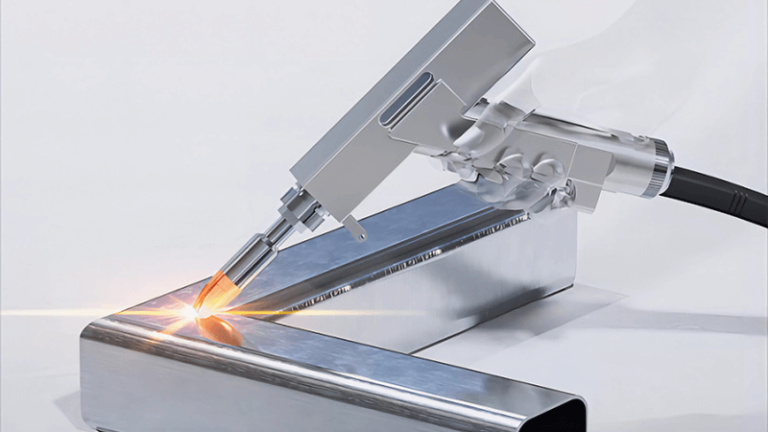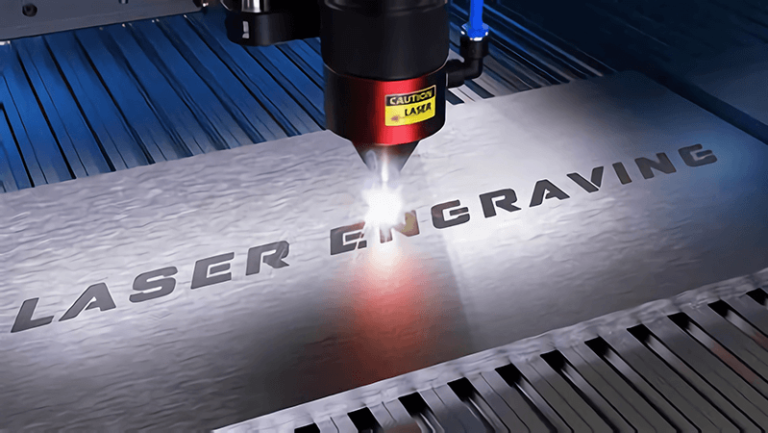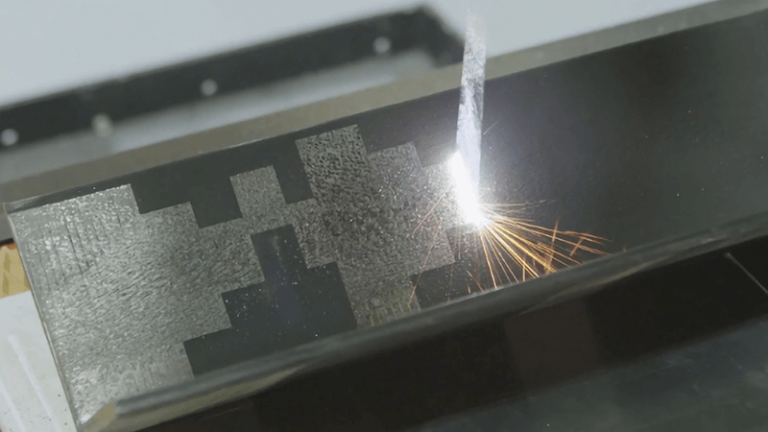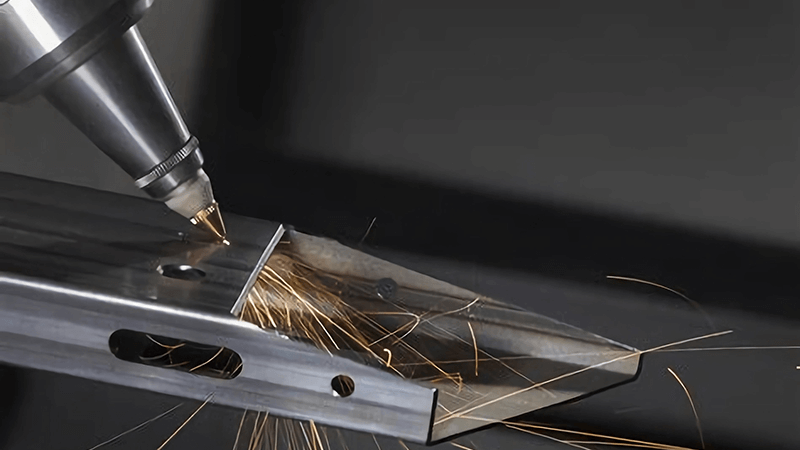
In the world of manufacturing, the demand for precision and efficiency is only growing. And when it comes to tube cutting, laser technology has risen to the challenge. But what does the future hold for tube cutting lasers in 2025? How are innovations shaping their applications?
As we look toward 2025, tube cutting lasers are set to become even more integral to manufacturing processes across various industries. The combination of ultra-high power capabilities, enhanced precision, automation integration, and environmental benefits positions this technology at the forefront of modern industrial solutions.
Let’s explore this fascinating development and why it matters for industries across the globe. Spoiler: This is not just about cutting tubes—it’s about revolutionizing processes.
How Will Innovations in Laser Technology Shape Tube Cutting in 2025?
Ultra-High Power Lasers
One of the most significant trends is the introduction of ultra-high power fiber lasers. For instance, Max Laser has unveiled a 25,000W fiber laser, which is currently the highest power laser available for cutting applications. This advancement allows for efficient cutting of ultra-thick materials, such as 70mm stainless steel, producing smooth cuts with minimal taper compared to traditional methods like flame or plasma cutting. The ability to handle thicker materials efficiently not only improves productivity but also reduces costs associated with secondary processing.
Precision and Versatility
Tube laser cutting machines are renowned for their precision and versatility. They can achieve tolerances as low as ±0.1 mm, making them ideal for industries that require exact specifications, such as automotive and aerospace. These machines can cut various tube profiles—round, square, rectangular, and oval—across a wide range of materials including stainless steel, aluminum, and carbon steel. This flexibility allows manufacturers to produce custom components swiftly while maintaining high quality.
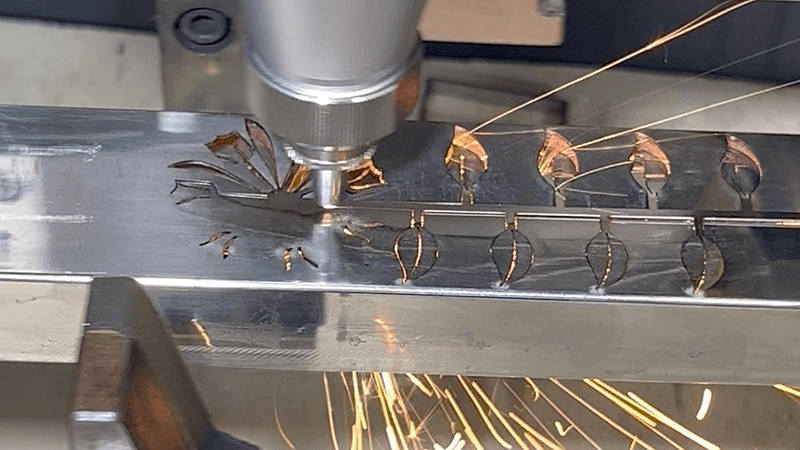
Automation and Integration
The integration of automation in tube cutting processes is another notable innovation. Modern tube laser cutting systems often feature automated loading and unloading systems, reducing manual labor and improving safety. They can also be integrated with CAD/CAM software to streamline workflows from design to production. This automation not only enhances efficiency but also minimizes the risk of human error during operations.
Economic and Environmental Benefits
As industries increasingly focus on sustainability, tube laser cutting technologies are positioned as cost-effective solutions that also promote environmental responsibility. These machines reduce material waste through precise cuts, leading to lower raw material costs. Additionally, fiber lasers consume less energy compared to traditional CO2 lasers, further decreasing operational costs while minimizing the carbon footprint associated with manufacturing processes.
Laser technology is becoming increasingly important in tube cutting.True
Laser cutting offers high precision and efficiency, making it a top choice for tube cutting in various industries.
Tube cutting lasers will see fewer innovations in the coming years.False
Innovations in laser technology are constantly shaping tube cutting, with continuous improvements expected in 2025 and beyond.
The Evolution of Tube Cutting Technology
Laser tube cutting has come a long way from its humble beginnings. When I first started working in the laser cutting industry, I could only dream of the level of precision we’re achieving today. Back then, we were still figuring out how to make the most of lasers for cutting various materials with minimal waste. Fast forward to 2025, and we’re talking about machines that can cut steel, stainless steel, aluminum, titanium, and even copper tubes with millimeter precision.
Technology has advanced so much that today’s tube cutting lasers can make complex cuts, including bevels, holes, and notches. The industry has seen significant leaps in software capabilities, laser power, and automation, making these machines faster and more versatile. This evolution is not just a technological triumph; it’s a game-changer for industries like automotive, aerospace, construction, and energy.
The Impact of Automation and AI in Tube Cutting
In 2025, automation is no longer optional; it’s essential. More and more tube cutting systems are being integrated with AI-driven software that optimizes cutting paths in real time. These AI systems learn from each cut and continually improve to reduce errors and enhance speed. For me, this is one of the most exciting innovations in the industry—machines that not only perform cuts but also optimize their operations without human intervention. This is what I call smart cutting.
At Kirin Laser, we’re incorporating this technology into our latest tube cutting models. With our machines, users can upload their design files, and the system will automatically adjust the cutting parameters to ensure perfect results every time. Imagine a world where you don’t have to babysit your laser cutting machine. You just hit 'Go,' and it does the rest. This is where we’re heading, and it’s making life easier for manufacturers everywhere.
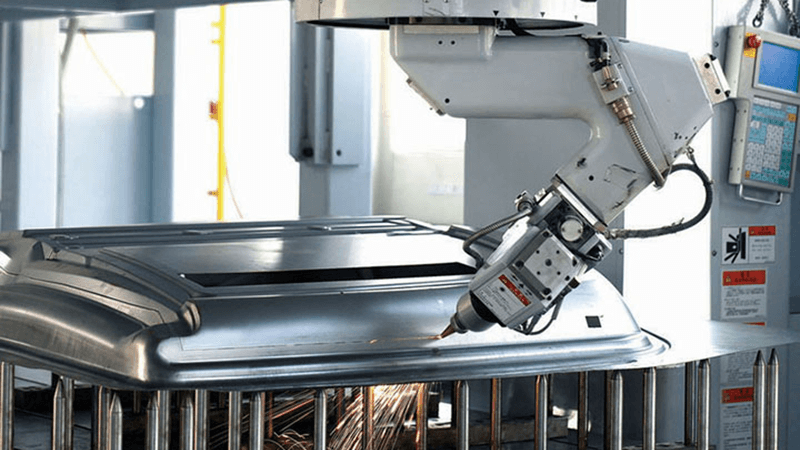
Laser Tube Cutting in Diverse Industries
The versatility of laser tube cutting is truly remarkable. As industries evolve, tube cutting lasers are finding new applications in some of the most demanding sectors. From creating intricate automotive parts to cutting pipes for energy plants, lasers are up to the task. One industry that stands out is aerospace. Here, precision is paramount, and tube cutting lasers provide the accuracy needed to meet these stringent requirements.
We’ve seen laser technology advance to the point where it’s not just about cutting a tube to size. It’s about creating parts that fit into highly complex assemblies, all with incredibly tight tolerances. Take aerospace, for instance. Laser tube cutting machines can produce lightweight, durable parts for aircraft and spacecraft that reduce weight without compromising strength. And in the automotive industry, tube cutting lasers are used for cutting exhaust pipes, roll cages, and other critical components with extreme precision.
How is Tube Laser Cutting Technology Benefiting Key Industries in 2025?
- Automotive Industry
Applications:
- Exhaust Systems
- Chassis Parts
- Roll Cages
Examples:
Automotive manufacturers use tube laser cutting technology to precisely produce critical components such as exhaust systems, chassis parts, and roll cages. The precision of tube laser cutting ensures the components meet stringent safety and performance standards, enabling high-speed production without compromising quality.
For instance, a leading European automotive manufacturer uses tube laser cutting to produce roll cages, allowing them to reduce weight without compromising strength, which is crucial for vehicle safety and performance.
Benefits:
- High precision ensures compliance with strict safety standards.
- Increased production efficiency and reduced material wastage.
- Ability to produce lightweight yet strong components, improving fuel efficiency and vehicle performance.
- Aerospace Industry
Applications:
- Aircraft Frames
- Landing Gear
- Engine Components
Examples:
In the aerospace sector, tube laser cutting is critical for producing lightweight, durable components such as aircraft frames, landing gear, and engine parts. These components must meet rigorous safety and performance standards, where the accuracy of laser cutting ensures reliable and precise manufacturing.
For example, a major aerospace company uses laser cutting to produce titanium frame components for aircraft. The precision allows for the creation of complex geometries with minimal material loss, which is crucial in a cost-sensitive, high-performance environment like aerospace manufacturing.
Benefits:
- Precise cutting capabilities ensure safety and reliability.
- Ability to work with lightweight and high-strength materials like titanium and aluminum.
- Reduced lead time for complex component production.
- Construction Industry
Applications:
- Steel Beams and Girders
- Scaffolding
- Custom Piping
Examples:
The construction industry benefits from tube laser cutting for creating steel beams, girders, and custom piping systems. The technology allows manufacturers to quickly and accurately cut complex shapes and designs required for large-scale construction projects, such as bridges, buildings, and industrial facilities.
For instance, a steel fabricator used tube laser cutting to create customized steel piping for a high-rise construction project. This process allowed the company to reduce the overall fabrication time and ensure precise fitment of the pipes, even for intricate architectural designs.
Benefits:
- Enhanced cutting precision speeds up production and assembly.
- Ability to produce custom shapes and sizes, tailored to specific project requirements.
- Faster turnaround time, helping meet tight project deadlines.
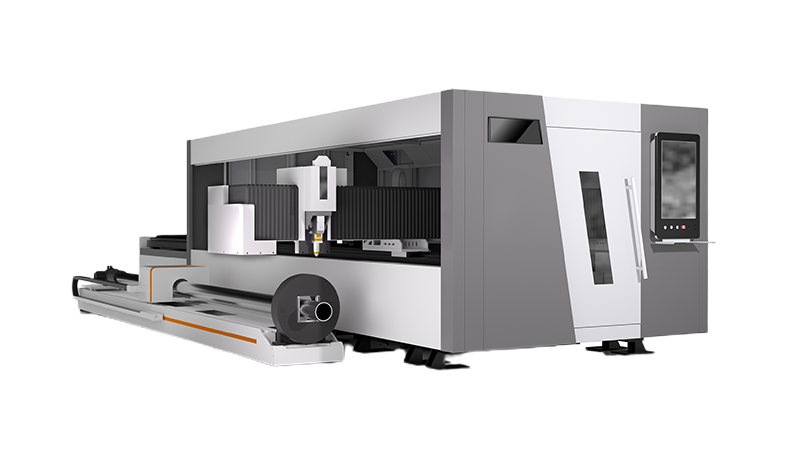
- Furniture Manufacturing
Applications:- Frames for Chairs, Tables, and Sofas
- Decorative Elements
- Metal Furniture Components
Examples:
In the furniture industry, tube laser cutting is used to create intricate and precise designs for metal furniture components, such as frames for chairs, tables, and sofas, as well as decorative metal elements. The flexibility of laser cutting technology allows designers to explore complex shapes and patterns, offering customized designs for high-end furniture.
For example, a luxury furniture manufacturer uses laser-cut metal for the frames of designer chairs and tables, incorporating intricate patterns that are both functional and decorative. This capability would be difficult to achieve with traditional methods.
Benefits:
- Flexibility in design, enabling complex, unique shapes and patterns.
- Faster production times, increasing the ability to meet customer demand.
- High precision, ensuring high-quality finished products with minimal defects.
- Energy and Power Generation
Applications:- Wind Turbines
- Oil Rigs
- Power Plant Piping Systems
Examples:
In the energy sector, tube laser cutting plays a vital role in manufacturing parts used in wind turbines, oil rigs, and power plant piping systems. These components require high precision and the ability to withstand extreme environmental conditions.
For example, a company specializing in renewable energy uses tube laser cutting to produce components for wind turbines, where the high precision ensures the parts fit together perfectly, improving the overall efficiency of the turbines.
Benefits:
- High precision, crucial for the performance and safety of energy systems.
- Ability to cut and fabricate large, complex components from tough materials like steel and alloys.
- Reduced material wastage and faster manufacturing processes.
- Medical Device Manufacturing
Applications:- Surgical Instruments
- Implants and Prosthetics
- Medical Device Housings
Examples:
In the medical industry, tube laser cutting is used to produce surgical instruments, implants, prosthetics, and medical device housings. The precision of the technology ensures that these components are safe, durable, and meet stringent medical regulations.
For instance, a medical device manufacturer uses tube laser cutting to create custom-made implants, allowing for highly accurate, patient-specific solutions in fields like orthopedics and dental implants. The precise cuts ensure a perfect fit and reduce the need for post-manufacturing adjustments.
Benefits:
- Extremely high precision, ensuring the safety and effectiveness of medical devices.
- Ability to create custom designs for patient-specific solutions.
- Compliance with stringent medical and safety standards.
- Heavy Equipment and Machinery Manufacturing
Applications:
- Frames and Structures for Machinery
- Hydraulic Components
- Heavy Equipment Components
Examples:
Heavy equipment manufacturers use tube laser cutting to produce frames, structures, and hydraulic components for machinery such as excavators, cranes, and mining equipment. The ability to cut thick, strong materials with precision enables the creation of robust components that can withstand the high stresses of industrial operations.
A well-known manufacturer of construction machinery utilizes laser cutting to produce the frame components of its heavy equipment. The precision ensures that the parts fit together seamlessly, reducing assembly time and increasing the durability of the machinery.
Benefits:
- High-strength materials can be cut with precision, improving the durability and reliability of the equipment.
- Faster and more accurate fabrication, reducing the time from design to production.
- Customization of parts to meet specific operational requirements.
Laser cutting is already the most popular method for tube cutting in manufacturing.True
Laser cutting has gained widespread popularity due to its ability to offer high precision, flexibility, and reduced material waste.
Laser cutting technology is expected to become obsolete by 2025.False
On the contrary, laser cutting technology is expected to continue evolving and gaining further prominence in manufacturing due to its efficiency and precision.
The Shift Toward Customization and Design Flexibility
In 2025, one of the most significant shifts in tube cutting is the demand for customization. Gone are the days when manufacturers simply cut straight tubes to basic specifications. Today, customers expect more flexibility—like the ability to cut tubes into intricate shapes and sizes, while maintaining structural integrity. This is particularly important in industries like architecture and interior design, where tubular structures often need to be custom-shaped to fit specific layouts.
Laser tube cutting makes this process easier than ever. The precision and speed offered by modern laser systems mean that manufacturers can now experiment with designs that were previously unthinkable. Whether it’s cutting tubes for a futuristic building frame or creating custom-made furniture pieces, the possibilities are endless.
How Laser Tube Cutting Is Greener in 2025
In an era that increasingly prioritizes sustainability, it’s essential to consider the environmental impact of the technologies we use. Laser tube cutting machines have already made a significant contribution to this by reducing waste. The precision of laser cutting ensures that every inch of material is used efficiently, and the waste generated is minimal.
Additionally, many laser tube cutting machines now feature advanced exhaust and filtration systems that minimize harmful emissions. As the world focuses on reducing carbon footprints, industries that rely on laser cutting are already moving toward more sustainable practices. The efficiency of laser technology means less energy is required to produce the same—or better—results. When combined with the minimal waste generated, it’s clear that laser cutting is leading the way toward greener manufacturing.
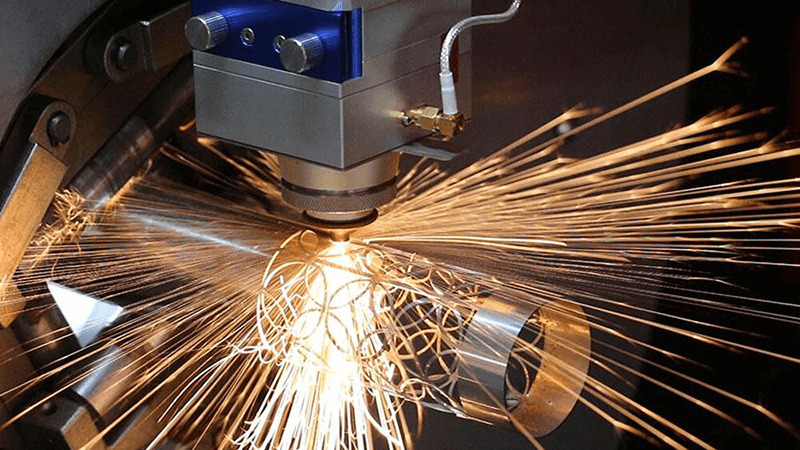
The Rise of Fiber Lasers: What’s New?
As we look toward 2025, fiber lasers have emerged as the gold standard for tube cutting. Fiber lasers are replacing traditional CO2 lasers in many industries due to their increased efficiency, lower operating costs, and superior performance. Fiber lasers have become the go-to solution for cutting metal tubes, especially in sectors like automotive, aerospace, and manufacturing.
Unlike CO2 lasers, which require larger setups and are more energy-hungry, fiber lasers are compact, energy-efficient, and capable of delivering high-quality cuts at higher speeds. The precision they offer is unmatched, and they significantly reduce the time it takes to complete a cut. As a sales engineer, it’s exciting to see how fiber lasers are transforming tube cutting, and I’m thrilled to see the impact they will continue to have in 2025 and beyond.
Conclusion: The Future of Tube Cutting Lasers
As we enter 2025, the future of tube cutting lasers looks brighter than ever. With advancements in automation, AI, customization, and sustainability, these machines are not just tools—they’re integral to the future of manufacturing. At Kirin Laser, we are proud to be at the forefront of these innovations, providing cutting-edge solutions for businesses across the world.
The key takeaway? Tube cutting lasers are no longer just about cutting metal. They’re about enabling industries to innovate, create, and produce with greater precision, efficiency, and sustainability. Whether you’re in aerospace, automotive, or construction, the potential for laser tube cutting technology in 2025 is limitless.
If you’re ready to take your production to the next level, now is the time to embrace these advancements. Trust me, the future is here, and it’s cutting-edge.
Sources:
For more on the latest tube cutting laser technologies, check out LaserTech Insights.
Interested in learning more about fiber lasers? Visit Fiber Laser Solutions.
Feel free to reach out to us at Kirin Laser for any inquiries or to see how our products can help you stay ahead in the industry!
References:
- "Why Cutting by Laser is Superior to Traditional Cutting Methods?", from Kirin Laser.
- "The Best Laser Metal Cutting Machines for Industrial Use ", from Kirin Laser.
- "The Advantages of Using CNC Machines for Metal Fabrication", from Kirin Laser.
- "How to Choose the Best Laser Cutting Machine for Steel Applications?", from Kirin Laser.
- "Tube cutting technologies keep up with market dynamics", from TPJ.
- "Top 10 Laser Cutting Machine for Steel in 2025: A Comprehensive Guide", from Krrass.


